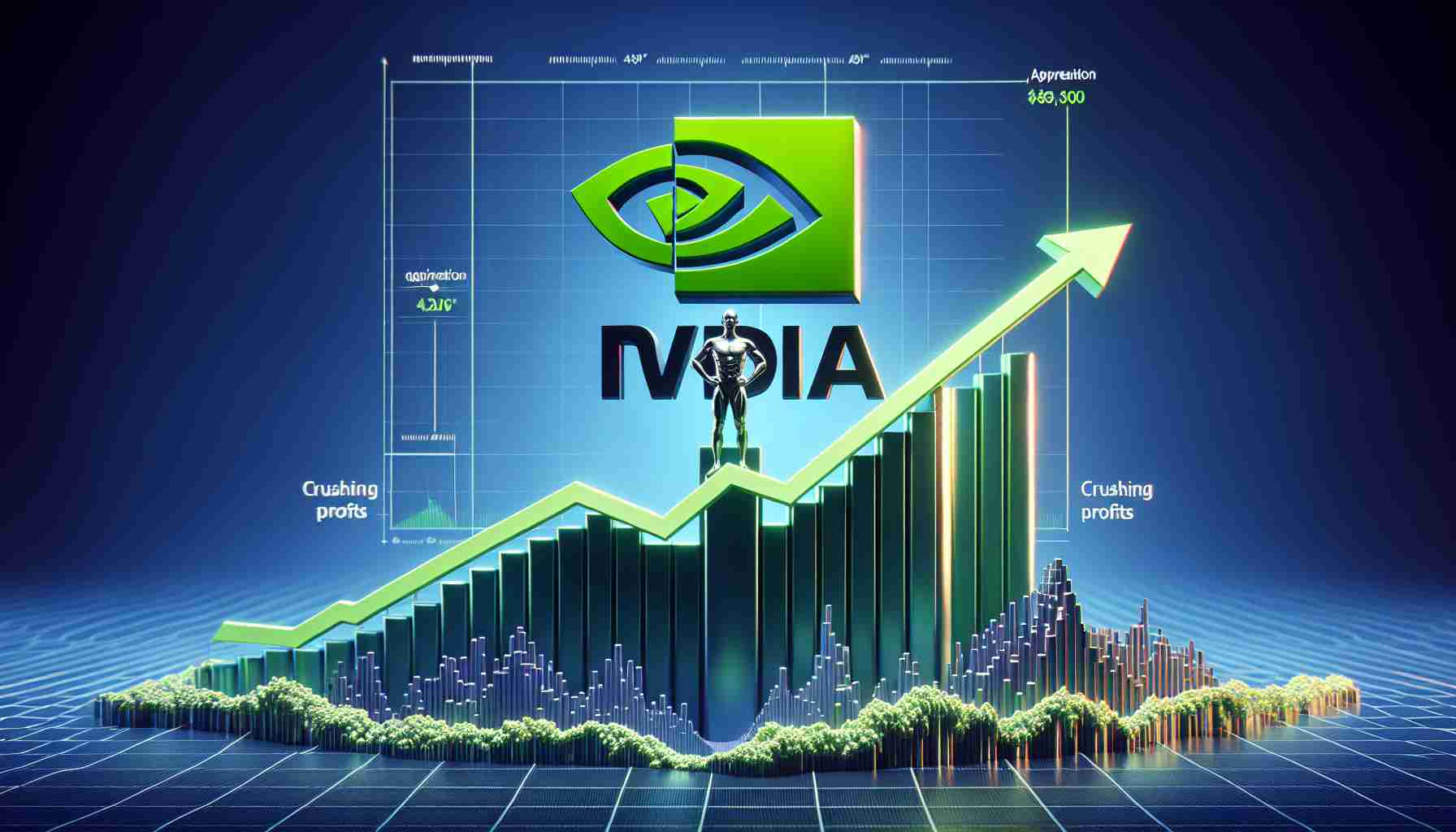Nvidia’s remarkable performance in the AI sector has positioned it as an unparalleled leader in the tech industry. In an extraordinary financial quarter ending October 27, 2024, Nvidia reported profits surpassing its entire revenue from the same quarter the previous year. Such a financial feat is a rarity among large corporations, showcasing Nvidia’s unprecedented growth.
Despite a slight dip in stock price following the announcement, Nvidia’s valuation has almost tripled since the start of the year. The company’s recent quarterly results indicate strong momentum that could sustain its growth trajectory.
Staggering Revenue Growth
Nvidia’s fiscal Q3 2025 revenue soared by 94% to an impressive $35.1 billion, topping analyst expectations. Earnings per share exceeded forecasts, doubling to $0.81 compared to an anticipated $0.75. This growth continues the trend seen earlier in the year, driven predominantly by the company’s data center division.
This division saw revenue surge by 112% year-over-year to $30.8 billion, fueled by high demand for Nvidia’s Hopper GPU platform, especially the H200 Hopper chip. In addition, 13,000 samples from Nvidia’s upcoming Blackwell GPU architecture were shipped during the quarter, indicating strong future sales potential.
Half of the data center revenue came from cloud service providers, with enterprise AI emerging as a significant growth area. Nvidia’s AI solutions, including its NIM microservices, are gaining traction across various industries, including industrial and robotics segments, which are experiencing accelerated growth.
Other divisions also performed well, with gaming, professional visualization, and automotive sectors contributing notable increases in revenue.
The Road Ahead
Looking forward, Nvidia anticipates Q4 revenue to reach approximately $37.5 billion, suggesting continued robust growth. Demand for the new Blackwell GPUs, in particular, exceeds current supply, prompting expectations of significantly higher revenue returns.
As Nvidia’s capabilities expand beyond traditional markets into enterprise and industrial domains, its growth prospects remain promising. Given its strong market position and reasonable valuation metrics, Nvidia continues to be an attractive consideration for investors.
How Nvidia’s AI Revolution Impacts Global Industries and Society
Nvidia’s unparalleled achievements in the artificial intelligence sector are not only reshaping the tech industry but also influencing global markets and how people, communities, and countries interact with technology. As Nvidia’s AI-driven innovations continue to accelerate, understanding the broader implications of this growth becomes crucial.
AI’s Ripple Effect on Societies
The ripple effects of Nvidia’s success are felt beyond technology enthusiasts and investors. The proliferation of AI technologies affects sectors such as healthcare, education, transportation, and finance. For instance, as AI systems become more integrated into healthcare, they enhance diagnostic accuracy, optimize personalized treatment plans, and assist in managing complex medical datasets. This transformation is potentially life-saving but raises questions about data privacy and ethics in medical AI applications.
Communities benefit from AI-driven advancements leading to smarter cities and more efficient public services. However, these changes can also bring about digital divides, where increased reliance on AI could marginalize those without access to advanced technologies or the internet.
Facts and Controversies
One intriguing aspect is how Nvidia’s technology is driving changes within the autonomous vehicle industry. Nvidia’s AI chips are critical in processing information for self-driving cars, thereby advancing the movement toward reducing road accidents and emissions. Nevertheless, controversies exist regarding safety, as AI in transportation is still in developmental stages, and reliance on technology can lead to unforeseen failures.
Another contentious issue lies in the energy consumption of AI infrastructure. Nvidia’s expansion and advanced computing tasks demand high energy, challenging firms and societies to balance environmental impacts with technological progress.
Advantages and Disadvantages
Advantages:
– Industry Transformation: Nvidia’s innovations drive efficiency across industries, leading to improved services and products.
– Economic Growth: By boosting sectors reliant on AI, Nvidia supports economic growth and job creation in tech-driven roles.
– Research Advancements: Increased AI capabilities propel academic and scientific research, leading to groundbreaking discoveries.
Disadvantages:
– Job Displacement: Automation and AI may lead to workforce displacement, requiring reskilling initiatives.
– Ethical Concerns: The increased role of AI sparks discussions on data privacy, bias, and ethical usage.
– Environmental Impact: High energy demands for powering AI systems raise sustainability concerns.
Key Questions and Answers
Q: How does Nvidia’s growth in AI affect developing countries?
A: Developing countries might face challenges in catching up with advanced AI implementations, risking further economic disparities. However, with strategic partnerships and investments, AI could potentially enhance development and address local issues like healthcare delivery and agricultural efficiency.
Q: What are the long-term societal implications of AI driven by companies like Nvidia?
A: Long-term implications include a shift toward AI-enhanced everyday life, from smart homes to AI-assisted healthcare. While this promises improved living standards, it also necessitates robust frameworks for AI governance and ethical standards worldwide.
For further insights into Nvidia’s technological advancements, visit the official Nvidia website.
In conclusion, as Nvidia continues to lead in AI innovation, it is crucial to consider both the opportunities and challenges presented by this technology boom. Balancing rapid development with ethical and societal considerations will shape a future where AI positively impacts humanity.




















